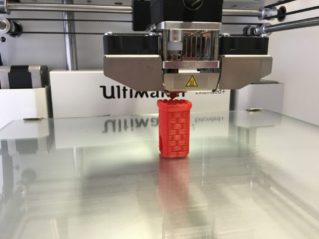Thermometer App: The Evolution of Temperature Tracking Technology

Introduction:
With the advancement in technology, mobile applications have become an integral part of our daily lives. In the domain of health and wellness, thermometer apps offer a convenient and efficient way to track and monitor temperature. This article aims to provide a comprehensive overview of thermometer apps, discussing their importance, historical development, and features. Whether you are a tech enthusiast or simply interested in temperature tracking, this article has got you covered.
Importance of Thermometer Apps

:
Temperature is a fundamental aspect of health assessment and plays a crucial role in diagnosing various conditions. Traditional thermometers require physical contact and may not always be accessible. Thermometer apps provide the convenience of tracking temperature using the sensors on our smartphones. This eliminates the need for carrying a separate thermometer and enhances the ease of temperature monitoring. Additionally, these apps often provide additional features like fever tracking, historical data, and reminders, making them a valuable tool in maintaining our well-being.
Historical Development of Thermometer Apps
:
The inception of thermometer apps can be traced back to the development of smartphones with built-in temperature sensors. Initially, these apps were basic and offered limited functionality. However, as technology advanced, thermometer apps began incorporating more sophisticated features, improving their accuracy and usability.
Early versions of thermometer apps primarily displayed the measured temperature in Celsius or Fahrenheit, often with a simple visual indicator to denote fever. Over time, developers introduced graphical representations, allowing users to visualize temperature trends better. Furthermore, with the emergence of wearable technology, thermometer apps expanded their functionality to include real-time temperature tracking through connected devices.
Evolution of Features
:
Thermometer apps have evolved significantly over the years, offering a wide range of features to enhance user experience and accuracy. Some key features commonly found in modern thermometer apps include:
1. Multi-platform Accessibility: Thermometer apps are available on both Android and iOS platforms, ensuring compatibility with a larger user base.
2. Real-time Tracking: Users can monitor their temperature in real-time, receiving instant results on their smartphones or wearable devices.
3. Data Tracking and Analysis: Thermometer apps allow users to store and analyze temperature readings over time, enabling the identification of patterns and trends.
4. Fever Alerts: These apps often include fever thresholds that trigger alerts when the body temperature exceeds the norm, helping users promptly address potential health issues.
5. Integration with Health Records: With the increasing focus on electronic health records, thermometer apps can sync temperature data with other health-related apps, providing a comprehensive overview of an individual’s well-being.
6. Reminders and Notifications: Users can set reminders for regular temperature measurements or medication schedules, ensuring timely interventions.
7. User-Friendly Interface: Developers prioritize creating intuitive and user-friendly interfaces, ensuring that users can navigate the app effortlessly and interpret temperature readings accurately.
Featured Snippet Structure:
Importance of Thermometer Apps
– Convenient and efficient alternative to traditional thermometers
– Ease of temperature monitoring with built-in smartphone sensors
– Additional features for enhanced well-being management
Historical Development of Thermometer Apps
– Inception with smartphones equipped with temperature sensors
– Basic functionality with temperature display
– Introduction of graphical representations and wearables
Evolution of Features
– Multi-platform accessibility
– Real-time tracking through smartphones and wearables
– Data tracking and analysis for pattern recognition
– Fever alerts for timely interventions
– Integration with health records for comprehensive health overview
– Reminders and notifications for proactive management
– User-friendly interfaces for easy navigation and interpretation
Conclusion:
Thermometer apps have revolutionized temperature tracking, offering a convenient and reliable alternative to traditional thermometers. From basic temperature readings to advanced features like data analysis and health record integration, these apps have evolved significantly over time. As technology continues to advance, we can expect further enhancements in accuracy and usability. Whether you are a health-conscious individual or a tech enthusiast, thermometer apps are undoubtedly an essential tool in the modern age.
FAQ
What is a thermometer app?
What features can I expect in a thermometer app?
How have thermometer apps evolved historically?
Flere Nyheder
3D print i Odense: Fremtidens t eknologi
Introduction: With the advancement in technology, mobile applications have become an integral part of our daily lives. In the domain of health and wellness, thermometer apps offer a convenient and efficient way to track and monitor temperature. This ...
Jannik Hansen
20 juni 2024
Outlook App: En Gennemgang af Historien og Vigtige Funktioner
Introduction: With the advancement in technology, mobile applications have become an integral part of our daily lives. In the domain of health and wellness, thermometer apps offer a convenient and efficient way to track and monitor temperature. This ...
Peter Mortensen
18 januar 2024
Minsundhed App Android: Revolutionizing Personal Health Management
Introduction: With the advancement in technology, mobile applications have become an integral part of our daily lives. In the domain of health and wellness, thermometer apps offer a convenient and efficient way to track and monitor temperature. This ...
Peter Mortensen
18 januar 2024
Oddset App: En Dybdegående Guide for Tech-entusiaster
Introduction: With the advancement in technology, mobile applications have become an integral part of our daily lives. In the domain of health and wellness, thermometer apps offer a convenient and efficient way to track and monitor temperature. This ...
Peter Mortensen
18 januar 2024











